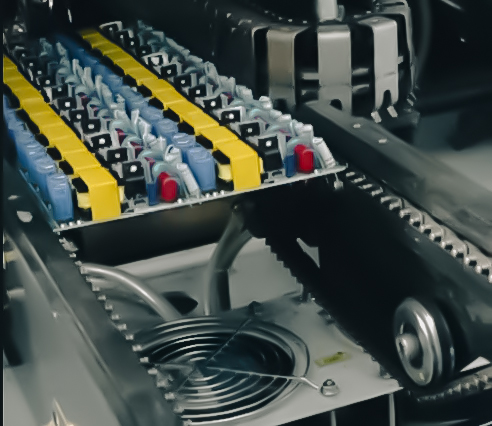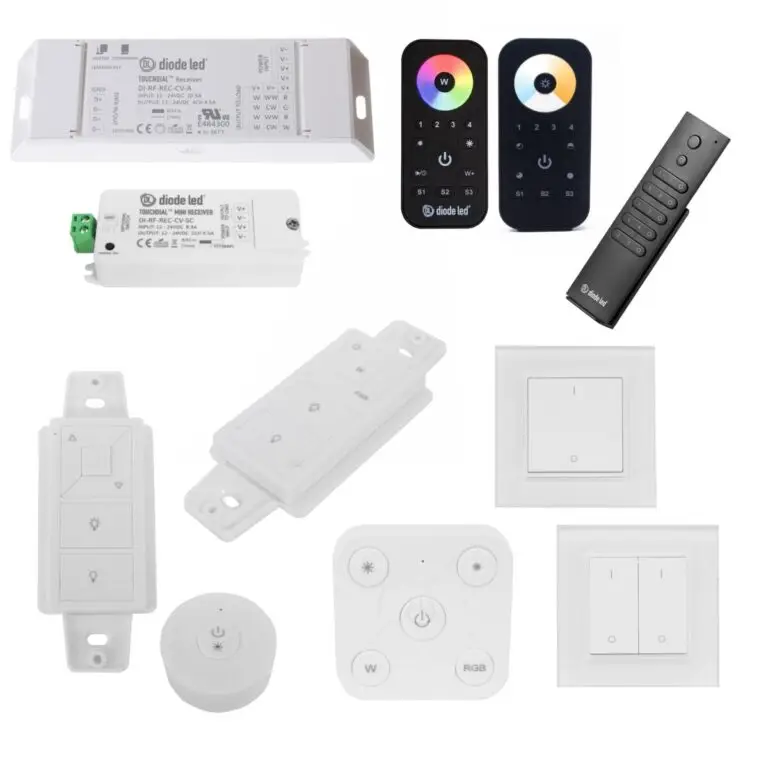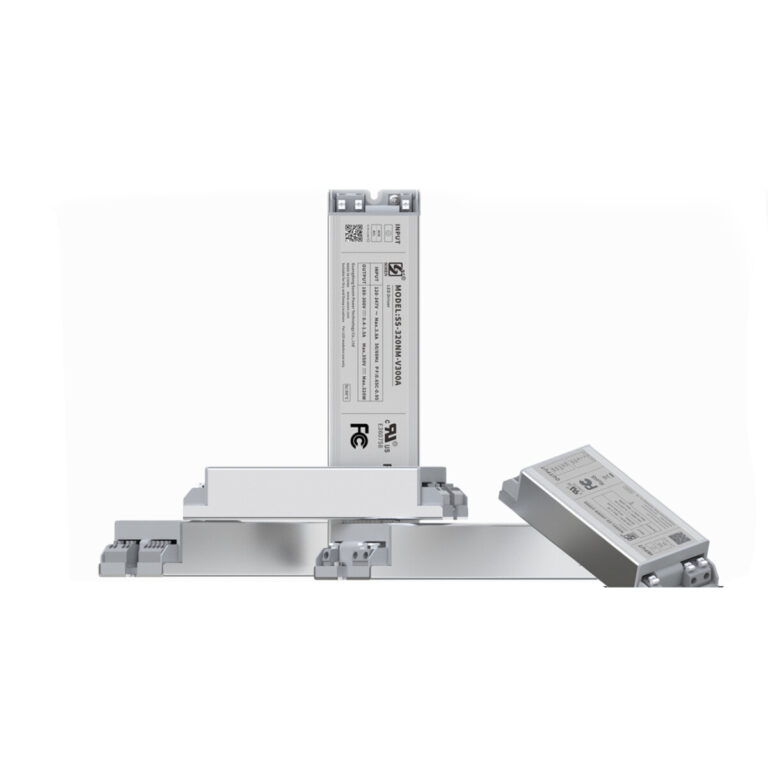Ballasts & Drivers
Ballasts & Drivers: The Heart of Efficient Lighting Systems
Understanding Ballasts & Drivers
Ballasts and drivers are critical components in modern lighting systems, ensuring stable and efficient operation across commercial buildings, industrial facilities, and residential applications. They regulate electrical currents, preventing power fluctuations that could damage lighting fixtures and reduce efficiency.
From electronic ballasts that optimize fluorescent lighting to LED drivers that provide steady power to LED fixtures, these devices enhance the longevity and performance of lighting systems. Whether upgrading to energy-efficient LEDs or maintaining existing fluorescent or HID setups, selecting the right ballast or driver is key to maximizing energy savings and system reliability.
How Do Ballasts & Drivers Work?
Modern Electronic vs. Traditional Magnetic Ballasts
Traditional magnetic ballasts use inductive coils and transformers to regulate current, but they are often less efficient, causing flickering and humming. In contrast, modern electronic ballasts use solid-state technology to provide smoother operation, improved energy efficiency, and reduced flickering.
The Role of Ballasts & Drivers in Lighting Systems
- Ballasts regulate voltage and current for fluorescent and HID (High-Intensity Discharge) lighting, preventing flickering and premature burnout.
- LED drivers provide a steady power supply to LED fixtures, adapting AC power to the DC requirements of LEDs, ensuring consistent brightness and longevity.
Types of Ballasts & Drivers
- Magnetic Ballasts – Older technology using coils and transformers.
- Electronic Ballasts – More energy-efficient, reducing flickering and noise.
- Constant Voltage LED Drivers – Deliver stable voltage to LED lighting systems.
- Constant Current LED Drivers – Adjust output to ensure consistent LED performance.
Why Are Ballasts & Drivers Essential?
Compatibility with Energy-Efficient Lighting Solutions
With the rise of LED retrofits and smart lighting systems, the role of ballasts and drivers has expanded to support energy-efficient lighting. Modern ballasts and drivers integrate seamlessly with automated lighting controls, reducing power consumption and extending fixture lifespan in commercial, industrial, and residential settings.
The Key Benefits of Using Quality Ballasts & Drivers
- Regulating Current – Prevents power surges and ensures stable performance.
- Improving Energy Efficiency – Reduces unnecessary power consumption and lowers operating costs.
- Extending Lighting Lifespan – Minimizes wear and tear on fixtures.
- Enhancing Performance – Reduces flickering, overheating, and inconsistent brightness.
Properly selected ballasts and drivers can reduce energy costs by up to 30%, making them a crucial element of a sustainable lighting strategy.
How to Choose the Right Ballast or Driver for Your System
Factors to Consider
When selecting a ballast or LED driver, consider the following:
- Lighting Type – Ensure compatibility with fluorescent, HID, or LED systems.
- Voltage & Current Requirements – Match the electrical specifications of your lighting fixtures.
- Dimming Capabilities – Choose models with dimmable functionality for adjustable lighting levels.
- Environment – Consider exposure to humidity, temperature, and other conditions for durability.
For expert guidance on selecting the ideal ballast or driver, explore our blog section for in-depth recommendations.
Types of Ballasts & Drivers
Understanding the different types of ballasts and drivers available ensures optimal performance for various lighting applications. Whether you’re working with fluorescent lighting, HID systems, or LED fixtures, choosing the right component is crucial.
- Electronic Ballasts for Fluorescent Fixtures – Ideal for commercial spaces requiring stable lighting.
- LED Drivers for Energy-Efficient Systems – Provides smooth power delivery for modern LED applications.
- Dimmable Ballasts & Drivers – Perfect for spaces needing adjustable lighting levels.
- Industrial-Grade Ballasts – Designed for high-performance applications in warehouses and large facilities.
Investing in the right ballasts and drivers ensures reliable operation and long-term energy savings.
Troubleshooting & Maintenance Tips
Keeping Your Ballasts & Drivers in Optimal Condition
Like any electrical component, ballasts and drivers require maintenance to function effectively. Common issues and solutions include:
- Flickering Lights – Often caused by an aging ballast or incompatible driver.
- Overheating – Ensure proper ventilation and compatibility with lighting fixtures.
- Inconsistent Brightness – A failing LED driver may need replacement.
- Ballast Hum or Buzzing – Magnetic ballasts tend to produce noise; upgrading to electronic models can resolve this issue.
For a more detailed breakdown, check out our comprehensive Troubleshooting Guide with step-by-step solutions.
Frequently Asked Questions About Ballasts & Drivers
How Do Ballasts and Drivers Contribute to Sustainability and Energy Efficiency?
Ballasts and drivers are essential for energy conservation and sustainability. High-efficiency electronic ballasts and LED drivers help reduce power consumption, minimize heat output, and extend the lifespan of lighting systems, reducing waste. Many modern lighting control systems integrate smart sensors and automated dimming, optimizing energy usage based on occupancy and daylight availability.
Answers to Common Questions About Lighting Control Components
-
What’s the difference between a ballast and a driver?
- Ballasts regulate power for fluorescent and HID lamps, while drivers control LED lighting.
-
Can I use an LED driver with any LED light?
- No, it’s crucial to match the voltage and current type (constant voltage vs. constant current).
-
How do I know if my ballast needs replacing?
- Signs include flickering lights, inconsistent brightness, and unusual buzzing sounds.
-
Are electronic ballasts better than magnetic ones?
- Yes, electronic ballasts are quieter, more energy-efficient, and reduce flickering.
-
How do I choose the right LED driver?
- Consider wattage, voltage requirements, and dimming capabilities for optimal performance.
Explore More or Get Started Today
Ballasts and drivers play a critical role in optimizing lighting performance, energy savings, and longevity. Whether upgrading an existing lighting system or installing a new setup, selecting the right ballast or driver ensures reliable and efficient operation.
For expert insights and recommendations, explore our blog for the latest in lighting control solutions, product reviews, and maintenance tips.


